Posté par Pascale Dubus, le 7 juin 2019;
- Date limite : 30 septembre 2019
- Date et lieu du colloque : 5-8 mars 2020, Boston,
 From its rudimentary manifestations as smoke and fire and footprint, to theological significations of the image of Jesus on the Shroud of Turin, the trace, as a visible marker of an absent presence, generates a compelling milieu to meditate on the proliferation of meaning in text and image. Mostly confined to image studies and linguistics, and widely characterized as an interplay between presence and absence, the trace famously received (theoretical) attention from Jacques Derrida and occupied a central place in his body of work, not least in Of Grammatology, Writing and Difference, and, in his seminal essay “Différance.” In Of Grammatology —as his . . . → En lire plus From its rudimentary manifestations as smoke and fire and footprint, to theological significations of the image of Jesus on the Shroud of Turin, the trace, as a visible marker of an absent presence, generates a compelling milieu to meditate on the proliferation of meaning in text and image. Mostly confined to image studies and linguistics, and widely characterized as an interplay between presence and absence, the trace famously received (theoretical) attention from Jacques Derrida and occupied a central place in his body of work, not least in Of Grammatology, Writing and Difference, and, in his seminal essay “Différance.” In Of Grammatology —as his . . . → En lire plus
Posté par Denis Dubois, le 29 septembre 2016;
- Date limite : 1er novembre 2016
- Date de prise de fonction : 1er avril 2017
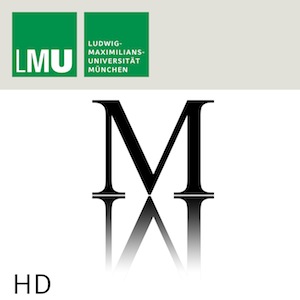 The International Doctoral Program (IDP) MIMESIS is dedicated to innovative doctoral research in the fields of literature and the arts, with special emphasis on historical, theoretical and transdisciplinary perspectives. It will enable cooperation between research projects in literature, theatre, performance, music, film studies, architecture and the visual arts, offering both a forum and a framework in which interests drawn from any one of these areas enter into a dialogue with other areas in the wider spectrum of creative engagements. The International Doctoral Program (IDP) MIMESIS is dedicated to innovative doctoral research in the fields of literature and the arts, with special emphasis on historical, theoretical and transdisciplinary perspectives. It will enable cooperation between research projects in literature, theatre, performance, music, film studies, architecture and the visual arts, offering both a forum and a framework in which interests drawn from any one of these areas enter into a dialogue with other areas in the wider spectrum of creative engagements.
Its research program is framed by the term mimesis, a key concept throughout the history of the arts, right up to the most recent developments in critical and cultural theory. MIMESIS offers a structured . . . → En lire plus
Posté par Denis Dubois, le 22 juin 2016;
- Date limite : 30 septembre 2016
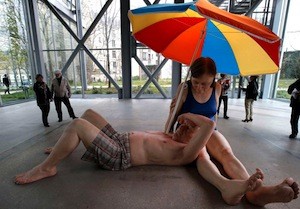 Vivant, lebendig, living. Les rapports entre la sculpture et le vivant sont complexes et variables selon les périodes et les aires culturelles. Il s’agit d’abord de mimesis : comment l’illusion – au sens d’Ernst Gombrich – produite par la sculpture, se fait-elle « illusion de la vie » ? Le naturalisme est-il un effet de conventions ou d’observation d’après nature ? Existe-t-il une « sculpture sur le vif » ? Des matériaux et pratiques sont-ils plus conducteurs que d’autres du vivant ? Comment d’autres arts (le théâtre, par exemple) et d’autres pratiques (le sport, la méditation, etc.) sont-ils sollicités ou modifiés dans cette approximation . . . → En lire plus Vivant, lebendig, living. Les rapports entre la sculpture et le vivant sont complexes et variables selon les périodes et les aires culturelles. Il s’agit d’abord de mimesis : comment l’illusion – au sens d’Ernst Gombrich – produite par la sculpture, se fait-elle « illusion de la vie » ? Le naturalisme est-il un effet de conventions ou d’observation d’après nature ? Existe-t-il une « sculpture sur le vif » ? Des matériaux et pratiques sont-ils plus conducteurs que d’autres du vivant ? Comment d’autres arts (le théâtre, par exemple) et d’autres pratiques (le sport, la méditation, etc.) sont-ils sollicités ou modifiés dans cette approximation . . . → En lire plus
Posté par Pascale Dubus, le 13 juillet 2015;
- Date limite : 15 septembre 2015
- Date et lieu du colloque : 17-18 décembre 2015, Royaume Uni, University of Cambridge.
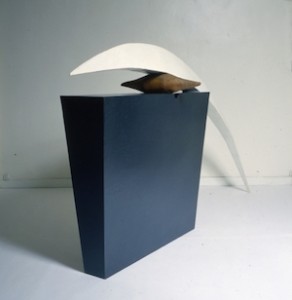 This interdisciplinary conference aims to bring together scholars from the sciences, social sciences and humanities in order to address material practices of mimesis. Aristotle, in one of the first definitions of the concept, argues that mimesis, or the imitation of nature, refers to both form and material. Thus far, scholarship has mostly focused on the role of form in mimetic practices, while the mimetic role of materials, despite the many disciplines in which these are central to making and knowing, remains significantly understudied. This interdisciplinary conference aims to bring together scholars from the sciences, social sciences and humanities in order to address material practices of mimesis. Aristotle, in one of the first definitions of the concept, argues that mimesis, or the imitation of nature, refers to both form and material. Thus far, scholarship has mostly focused on the role of form in mimetic practices, while the mimetic role of materials, despite the many disciplines in which these are central to making and knowing, remains significantly understudied.
Materials play a fundamental role in mimetic practices, from the earliest known examples to some of the most recent. Ancient ceramic vessels, for instance, some nearly . . . → En lire plus
Posté par Pascale Dubus, le 27 décembre 2014;
- Date limite : 30 janvier 2015
- Date et lieu du colloque : 27-28 mars 2015, New York, Binghamton University
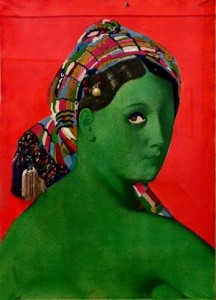 The phrase “cut and paste,” in its most fundamental definition, is the process of selecting and combining fragments. Inspired by an established commitment to critical research, this year’s conference aims to explore the assortment of thematic, methodological, and sociopolitical interpretations derived from the traditional concept of extracting and adhering. The phrase “cut and paste,” in its most fundamental definition, is the process of selecting and combining fragments. Inspired by an established commitment to critical research, this year’s conference aims to explore the assortment of thematic, methodological, and sociopolitical interpretations derived from the traditional concept of extracting and adhering.
The twenty-thirdannual Crossing The Boundaries Conference, hosted by the Art History Graduate Student Union at Binghamton University, invites submissions from any historical or disciplinary approaches that involve a literal or conceptual appropriation achieved through cutting and pasting.
Potential topics might include (but are not limited to):
Collage, bricolage, assemblage, montage Authorship, plagiarism, imitation . . . → En lire plus
Posté par Pascale Dubus, le 12 décembre 2014;
- Date limite : 1er février 2015
- Date de remise des textes : 1er août 2015
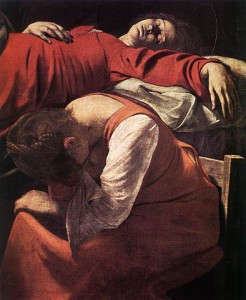 En dépit de sa complexité et de ses ambiguïtés, la définition du naturalisme dans l’art est souvent tenue pour acquise. En effet, l’histoire de l’art continue d’être schématiquement divisée en périodes selon le degré de naturalisme. Ainsi, par exemple, les chapiteaux végétaux remarquablement véridiques de la cathédrale de Reims sont décrits comme une rupture par rapport au style médiéval qui serait typiquement « abstrait » ; et des artistes comme Caravage sont régulièrement étiquetés « naturalistes » dans des textes historiographiques divers, sans que cette description soit sérieusement expliquée ni remise en question.Il est évident, pourtant, que les relations entre . . . → En lire plus
Posté par Pascale Dubus, le 2 août 2014;
- Date limite : 15 août 2014
- Date et lieu des rencontres : 21–22 novembre 2014, Londres, The Courtauld Institute of Art
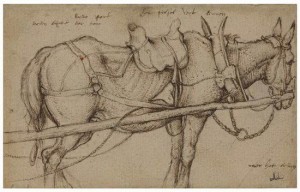 The term ad vivum and its cognates al vivo , au vif , nach dem Leben and naer het leven have been applied since the thirteenth century to depictions designated as from, to or after (the) life. This one and a half day event will explore the issues raised by this vocabulary in relation to visual materials produced and used in Europe before 1800, including portraiture, botanical, zoological, medical and topographical images, images of novel and newly discovered phenomena, and likenesses created through direct contact with the object being depicted, such as metal casts of animals. The term ad vivum and its cognates al vivo , au vif , nach dem Leben and naer het leven have been applied since the thirteenth century to depictions designated as from, to or after (the) life. This one and a half day event will explore the issues raised by this vocabulary in relation to visual materials produced and used in Europe before 1800, including portraiture, botanical, zoological, medical and topographical images, images of novel and newly discovered phenomena, and likenesses created through direct contact with the object being depicted, such as metal casts of animals.
It is has long been recognised that . . . → En lire plus
|
Équipe Rédacteur en chef : Olivier Bonfait.
Rédacteurs : Elliot Adam (Moyen Age) ; Nicolas Ballet (XX-XXIe siècles) ; Matthieu Fantoni (musées) ; Antonella Fenech Kroke (bourses) ; Vladimir Nestorov (Lettre mensuelle)
Administrateur web : Matthieu Lett.
ancien éditeur : Pascale Dubus
anciens rédacteurs : Gautier Anceau, Sébastien Bontemps, Damien Bril ; Sébastien Chauffour ; Ludovic Jouvet ; Aude Prigot
|
 From its rudimentary manifestations as smoke and fire and footprint, to theological significations of the image of Jesus on the Shroud of Turin, the trace, as a visible marker of an absent presence, generates a compelling milieu to meditate on the proliferation of meaning in text and image. Mostly confined to image studies and linguistics, and widely characterized as an interplay between presence and absence, the trace famously received (theoretical) attention from Jacques Derrida and occupied a central place in his body of work, not least in Of Grammatology, Writing and Difference, and, in his seminal essay “Différance.” In Of Grammatology —as his . . . → En lire plus
From its rudimentary manifestations as smoke and fire and footprint, to theological significations of the image of Jesus on the Shroud of Turin, the trace, as a visible marker of an absent presence, generates a compelling milieu to meditate on the proliferation of meaning in text and image. Mostly confined to image studies and linguistics, and widely characterized as an interplay between presence and absence, the trace famously received (theoretical) attention from Jacques Derrida and occupied a central place in his body of work, not least in Of Grammatology, Writing and Difference, and, in his seminal essay “Différance.” In Of Grammatology —as his . . . → En lire plus En dépit de sa complexité et de ses ambiguïtés, la définition du naturalisme dans l’art est souvent tenue pour acquise. En effet, l’histoire de l’art continue d’être schématiquement divisée en périodes selon le degré de naturalisme. Ainsi, par exemple, les chapiteaux végétaux remarquablement véridiques de la cathédrale de Reims sont décrits comme une rupture par rapport au style médiéval qui serait typiquement « abstrait » ; et des artistes comme Caravage sont régulièrement étiquetés « naturalistes » dans des textes historiographiques divers, sans que cette description soit sérieusement expliquée ni remise en question.Il est évident, pourtant, que les relations entre . . . → En lire plus
En dépit de sa complexité et de ses ambiguïtés, la définition du naturalisme dans l’art est souvent tenue pour acquise. En effet, l’histoire de l’art continue d’être schématiquement divisée en périodes selon le degré de naturalisme. Ainsi, par exemple, les chapiteaux végétaux remarquablement véridiques de la cathédrale de Reims sont décrits comme une rupture par rapport au style médiéval qui serait typiquement « abstrait » ; et des artistes comme Caravage sont régulièrement étiquetés « naturalistes » dans des textes historiographiques divers, sans que cette description soit sérieusement expliquée ni remise en question.Il est évident, pourtant, que les relations entre . . . → En lire plus





